On Sunday the 11th of October we were on location at the accommodation of the two interviewees – 2 Cosplayers. The aim of the recording session was to capture an interview with the two participants and to film them whilst they are building/creating their next costumes.
To record the audio I used the Sound Devices 633 Field mixer (it has very good reviews from industry professionals – Ed Capp , Mary Milton, Sound and Picture Report featuring David Ruddick) – (LO1) , it provides multiple input options and separate + stereo summed tracks which is more than useful. I also had a spare Zoom H4n just in case I need more tracks or the Sound Devices 633 runs out of battery. The microphones i used were –
RØDE NTG2
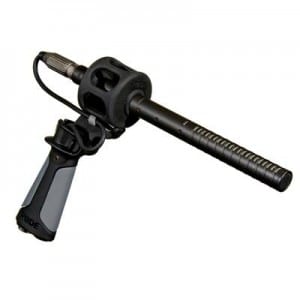
AT Pro70
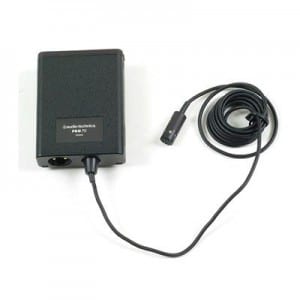
I set up 2 AT Pro70 microphones to record the interviewee’s voices (they were sat down in the shot with limited movement included, the mics were on clips on their shirts). This way I could get a closer perspective on their voices typical to the Documentary style dialogue:
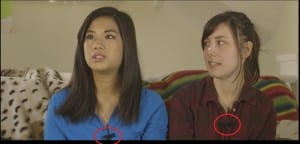
The girls spoke slightly quiet but as they got more in-tone with the recording process their audio levels improved and I ended up with a consistent piece of dialogue.
(LO1) Clip mike/tie-tack mike
Smaller microphone designs developed, that have proved to be the solution to many sound difficulties. A small electret or a dynamic microphone with a clip attachment the ‘clip mike’ or ‘tie-tack’ mike has become a favorite device in productions where it is unimportant whether the viewer sees it attached to someone’s tie or coat lapel.
The clip mike (miniature capsule mike – elerect/dynamic0 – A single mike is clipped to the necktie, lapel or shirt.
(Millerson, 2001; 112)
I also set up the Rhode NTG2 as a room microphone to capture any other movements or some room ambience to improve scene consistency in post production. At a later point during the shoot I switched to a boom operating set-up as the interviewees had started to make their costumes and movement was involved (camera movement as well) and I also captured some spot FX on set.
(LO1) “The shotgun microphone is designed to pick up sound within quite a narrow angle (arround 50 degrees), while remaining much less sensitive to sounds from other directions” (Millerson, 2001; 109).
This makes it ideal for directional SFX capture
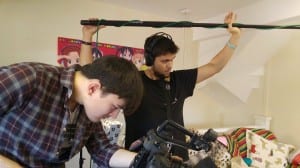
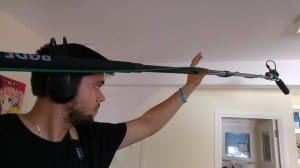
I listened back to all recorded audio after each scene recording to make sure everything sounds good and to see if any adjustments need to be made.To Synchronize the sound later in post we used verbal sync-points which include short scene description and take number + a clapperboard
At the end of the session it was concluded that we have captured good audio and video recordings.
Issues that occurred:
– house noises (creaky boards, doors)
-outside noises (cars, ambulances passing by)
-microphone was rattling/ another microphone had battery problems
– through good communication between the production team we re-recorded anything that had background noise that was disrupting the dialogue (despite the fact that there wasn’t a lot of audio pollution from the outside in most key recordings). I booked 2 Rhode NTG2’s for a reason, one of them had a loose bolt which held the microphone’s hardware together and it was creating rattling noises which disrupted the audio ( I didn’t have a screwdriver handy to tighten it up) so I replaced it with the spare NTG2 I brought. One of the Clip mics had a faulty battery pack ( I tried changing the batteries but it still didn’t sent a signal to the field mixer), I also brought spare clip microphones so I replaced that one as well. (LO4)
In conclusion I could say that it was a great day on set. We conducted ourselves as professionals adhering to all the rules for recording on set/location. We learned that we work well as a team and that we could reflect off each other and identify problems during recordings. I learned that it is always good to bring extra equipment just in case something goes wrong. This was quite useful as we are shooting in London MCM Comic – Con next and now I know to prepare extra equipment.
Millerson, G. (2001) Video Production Handbook. Oxford: Focal Press